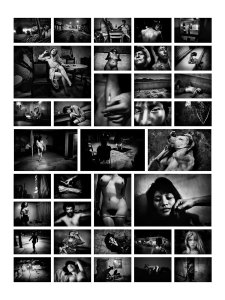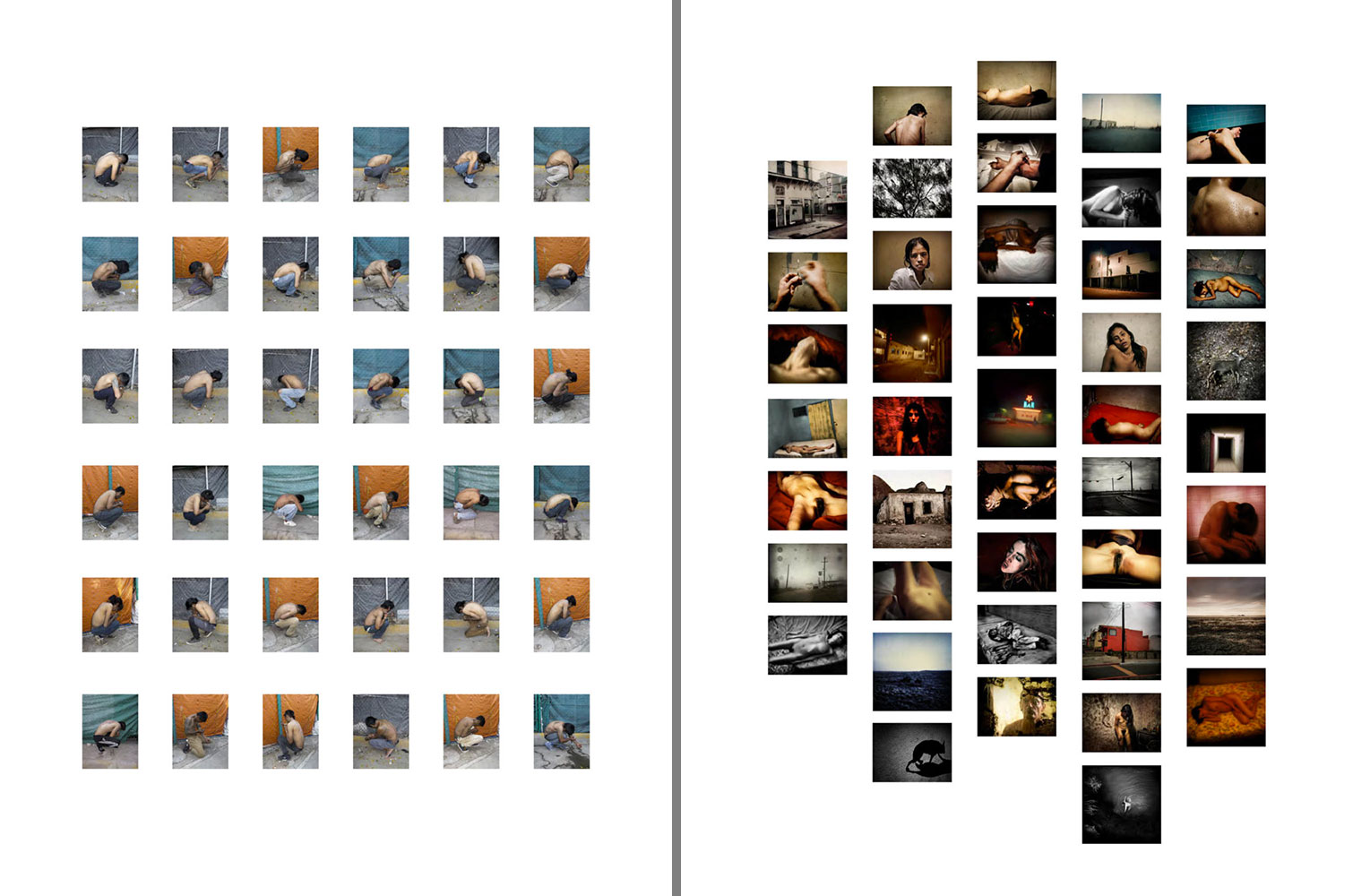Photo:Antoine d’Agata
 Antoine d’Agata travelled around the world between 1983 and 1993. In 1990 he studied photography with Larry Clark and Nan Goldin in New York. Since then, he has been making photos about drug abuse, sex, personal obsessions and prostitution. He has been living a nomadic lifestyle since 1995. Since 2008 he is part of the international photo agency Magnum.
Antoine d’Agata travelled around the world between 1983 and 1993. In 1990 he studied photography with Larry Clark and Nan Goldin in New York. Since then, he has been making photos about drug abuse, sex, personal obsessions and prostitution. He has been living a nomadic lifestyle since 1995. Since 2008 he is part of the international photo agency Magnum.
By Dimitris Lempesis
Photo: Galerie Les filles du calvaire Archive

The body of work presented at Antoine d’Agata’s solo exhibition “Codex | Mexico” 1986 – 2021” reflects the experiences of this prolific artist: violent and troubled. The ensemble testifies to a journey, to incessant return trips to Mexico, which have been for the artist a field of absolute experimentation, beyond limits. The photographic material that makes up this ensemble comes from experiments carried out over a period of thirty-five years. Two histories are intertwined here, that of Mexico and that of the author’s relationship with the violence of a community that he has seen disintegrate. “For forty years, – way before becoming a photographer – I live, through my own experience, in Mexico as elsewhere, in this requirement of a possible common, within the community of those who have no community », As George Bataille calls it, a« community of lovers » in the broad sense, in love and stoned, invisible and infinitely fragmented, of those who have nothing but their body to survive, to feel and to exist”. The entry point to this violence is the drug crystal meth, which spares neither individuals nor social structures. In order to directly incorporate this history of violence, d’Agata absorbs the chemicals that are its source. The process is both brutal and extra-ordinary. Devastated reality then becomes abominable: the landscape empties, human disintegrates, the death drive reaches its peak. Women images rythm the show. These are the singular ones he met during their shared experience of violence. The exhibition, deploys thirty-six distinct artistic languages through a unique experimental layout. Digital or silver photographs, serigraphs, engravings, videograms, found images. There are many ways to enter the work: formal, technical, political or conceptual. A system of “polyptic” frames, sometimes containing dozens of images, reveals the profusion of Antoine d’Agata’s work. “No particular fondness for photography but the need to make the camera spit out what has not been said. Not to consider the thing but to swallow it whole. Spit it out. The material is there, in the ruts of reality. Through the tenacious habituation to pain and pleasure, I unravel the mechanics of our bodies that have become puppets, subjected to fear and desire”. D’Agata’s method is a physical, direct involvement with the world and the experience of the constraint of the body, those imposed by violence, drugs or his presence in prisons. To bear witness to his own history and that of others, d’Agata conceives a kind of photographic labyrinth in which he assembles temporalities and arranges languages. The work is sometimes collaborative: stolen photos, silkscreens and images made by prisoners are superimposed on the photographer’s original images. The repertoire is that of crime, sex and drugs, punctuated by abandoned spaces. The dark romanticism of the origins gives way, to the rhythm of the exponential violence that Mexico is experiencing, to a photography where reality resurfaces, in its raw state. The contrast between the excess of gestures, visual saturation and the rigour of the exhibition makes it possible to apprehend the complexity of his subject.
Photo: Antoine d’Agata, Alicia (Crack), 2004, © Antoine d’Agata, Courtesy the artist and Galerie Les filles du calvaire
Info: Galerie Les filles du calvaire, 17 Rue des Filles du Calvaire, Paris, France, Duration: 28/10-4/12/2021, Days & Hours: Tue-Sat 11:00-18:30, www.fillesducalvaire.com




Right: Antoine d’Agata, Oscurana, Mexique, 2013-2015, © Antoine d’Agata, Courtesy the artist and Galerie Les filles du calvaire

Right: Antoine d’Agata, La frontera, 1999, © Antoine d’Agata, Courtesy the artist and Galerie Les filles du calvaire

